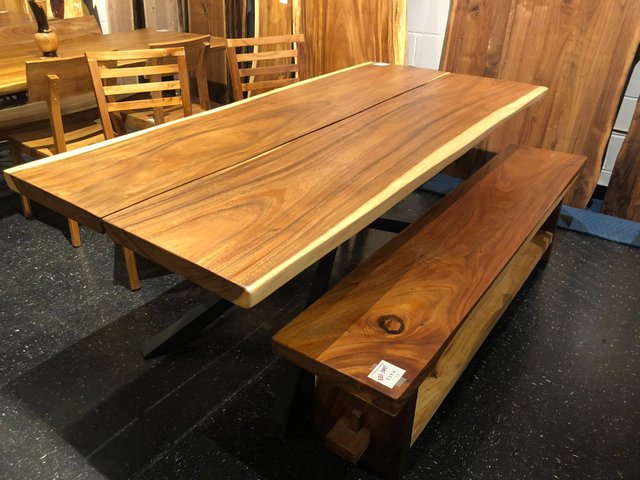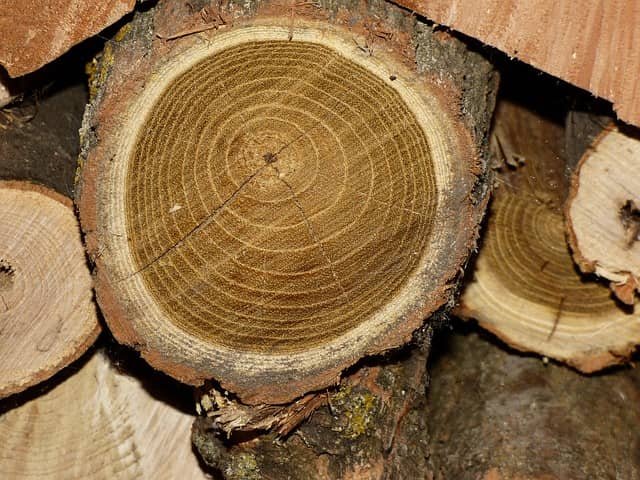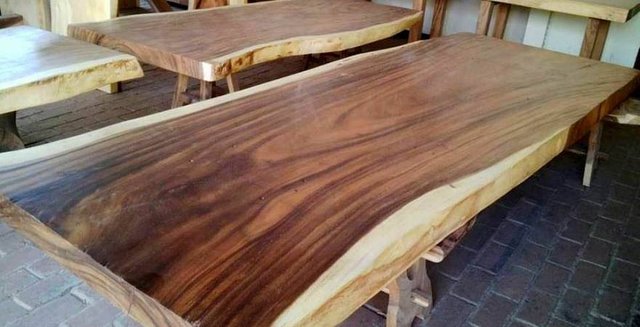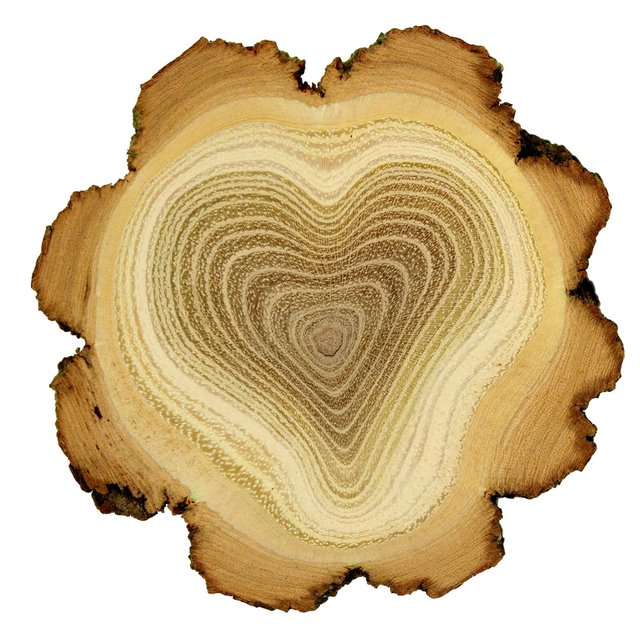
When you glance around at your friends' recently equipped homes, you'll see a lot more acacia wood than pine or mahogany. Because the wood isn't grown in the UK, it's a little more exotic, and it hasn't been frequently used until recently. However, word about this renewable tree species is growing.
Let's take a closer look at this intriguing wood to discover how it differs.

What is Acacia Wood?
Acacia is a type of wood that grows in Africa, the Americas, Asia, Australia, and the Pacific Islands. However, it originated in Australia and is native there. There are actually more than one thousand varieties of Acacia trees in Australia, so the grain and overall appearance are different, with different furniture made from this wood species. It is hardwood, so it’s suitable for timber, logs, and for sturdy types of furniture like chairs, tables, and other items in the home.
Properties of Acacia Wood
*. Acacia wood is naturally water and moisture resistant, making it ideal for humid locations like Amazonia.
*. Acacia wood may be utilized in a variety of applications due to its resilience. Both newly cut pieces and seasoned wood can be employed.
*. Acacia wood is a lightweight and long-lasting material that is ideal for musical instruments.
*. The presence of tannin and extractives that give acacia wood its deep, dark hue
*. When used as lumber, its great density makes it extremely durable.
*. It's resistant to decay, insects, termites, and fungal growth.
*. Acacia wood is extremely resistant to denting and rotting, making it a great choice for outdoor furniture and decks.
What Sets Acacia Apart from Other Tree Species?
Acacia wood's durability and resistance to water damage are major selling advantages in acacia-based products. This was one of the main points I took away from an interview with Rajiv, a 35-year furniture maker who complimented the fact that Acacia products are scratch-resistant, unlike certain other wood species that reveal scratches more visibly.
The natural color is a dark brown tone with a beautiful texture. The wood, whether in the kitchen or the bathroom, adds depth to the space. This wood also has antibacterial characteristics, especially when it comes to fungi, which makes it ideal for use in kitchen food bowls, serving bowls, and other equipment. Furthermore, because of the waterproof character of this wood, cookware will not warp due to water damage.
Is There a Unique Feel to It?
It's possible to polish the wood to make it feel silky smooth, but the wood already has a smooth finish, so this isn't necessary. It's ideal for food bowls since it has smooth curves that allow food to travel around freely with no sharp edges to collect crumbs or catch food on.
How to Preserve the Durability of Acacia Wood
Any acacia wood furniture should be hand-washed rather than put in the dishwasher to protect its long-term durability. If you don't have a dishwasher, it's not a good idea to leave the bowls in the sink to soak, along with the other plates and dishes; the lengthy exposure to water could damage the goods. As a result, soaking the wood is not a good idea. Temperatures in the middle of the range are good, but extremes of cold or heat can damage the acacia wood by making it brittle.
Working with Renewable Forestry
One of the benefits of Acacia trees is that when they are harvested, they replant quickly. Pine trees grow about 7% organically per year, but Acacia outgrows this by a factor of ten. It's difficult for forestry firms to run out of wood supply and deplete the forest due to the rapidity of natural growth. As a result, it's a good renewable resource that, like other forests, cleans the air. It also has a lovely perfume when freshly cut, which distinguishes it from other trees.
Acacia wood's popularity continues to grow as more homeowners learn about it and express a preference for it. Whether you like the darker finish, the renewable forestry aspects due to its faster organic growth rate, or the strong visual appearance that complements any room, the popularity of this wood species continues to grow as more homeowners learn about it and express a preference for it.
Acacia wood has a variety of applications.
Acacia wood has been utilized as a building material for ages. Due to its lovely hue and grain pattern, it grew more popular as a decorative component over time. Acacia wood is also commonly used in furniture manufacture.
It can be processed into paper pulp for use in bookbinding and printing.
It has been inlaid into guitars because of its lovely color, making them incredibly desirable due to their scarcity.

Types of Acacia Wood
The various types of acacia wood each have their own characteristics and properties. We'll look at five different species of this wonderful and resilient wood:
1. Acacia Koa (Hawaiian Acacia)
Hawaiian Koa is a frequent name for this tree.
1,170 lbf Janka hardness rating (5200N)
density: 610 kg/m3 (38 lbs/ft3)
This acacia species is one of the most expensive woods on the planet, which makes it suitable for high-end furniture pieces due to its durability and strength. Acacia Koa is a lovely Acacia wood with golden hues that are only seen in this species.
The grain structure of this variety of acacia is reddish-brown with dark black streaks or veins running through it. When fashioned into furniture, this adds to the piece's attractiveness.
Stains work well with Koa wood because they don't change the natural color of the wood too much, allowing it to retain its unique attractiveness.
Because Koa woods include a substantial quantity of sapwood, caution should be exercised while staining or finishing them if you want to preserve some sapwood visible.
Because of its endurance, it was traditionally used to make canoes in the Hawaiian Islands. It's still utilized today in a variety of instruments, like as guitars, as well as flooring and furniture.
2. Acacia Melanoxylon
Australian blackwood, Tasmanian blackwood, Acacia blackwood are all common names for this tree.
1,160 lbf Janka Hardness (5,180 N)
density: 40 pounds per square foot (640 kilograms per square meter)
Acacia is a tough and long-lasting wood. Because of its aesthetic value, it is frequently utilized for furniture and flooring in high-end projects.
This kind of acacia has black patterns that give it its name.
Because of its strength, Acacia melanoxylon has been used to build houses all over the world.
Queen Victoria popularized this species of acacia by installing Acacia Melanoxylon floors in her Balmoral Castle house.
This variety of acacia is extremely durable and resistant to termites, making it excellent for usage in today's homes all around the world. When burned with other woods, this kind of tree has been reported to aid with respiratory ailments such as asthma.
3. Acacia Cambagei is the third species of Acacia.
Australian origin
Gidgee is a frequent name for this creature.
Hardness of Janka: 4,270 lbf (18,990 N)
density: 1,150 kg/m3 (72 lbs/ft3)
This sort of wood has a wonderful grain pattern and is yellow in color. It has a medium to coarse texture and is quite hard and weighty. Many consider this to be the most valuable type because it contains both.
Because of its durability and hardness, it is mostly employed in flooring applications. If you want long-lasting flooring, this is a terrific option.
4. Acacia Acuminata
origin: Australia's south-west
Raspberry Jam is a common name for this product.
3,100 lbf Janka hardness (13,810 N)
density: 1,040 kg/m3 (65 lbs/ft3)
The heartwood of this acacia tree is dark brown-reddish, while the sapwood is yellowish. Raspberry jam has a long shelf life, making it excellent for use on fence posts other turned objects.
When this type of acacia wood is chopped, it emits an unique raspberry jam aroma, hence the name.
5. Acacia Baileyana
Australian origin
Common names: Bailey Acacia, Cootamundra Wattle
Hardness rating of Janka: 1710 lbf (7600N)
This acacia comes from a large shrub or tiny tree. This acacia wood has been utilized by Aboriginals to construct spears, shields, and other weapons.
